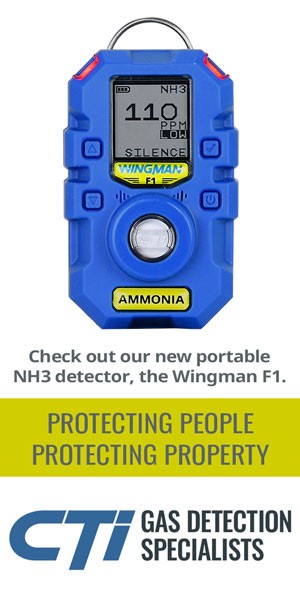Situational Awareness Does Matter

I was returning from hiking one morning and as I rounded a curve I noticed four birds in my lane. I was going about 55 mph, and my first thought was these birds will fly out of the way. I didn’t slow down. In the couple of seconds that it took me to get up close to the birds I suddenly realized these four birds were baby ducklings, and they couldn’t fly. At the last second I swerved to avoid them. If I missed the last one in the line, he was a very lucky duck.
Are we like those ducklings? They were completely ignorant of the danger they were in. We may have some idea of what is happening in a situation, but our perception of what is happening may be incorrect. Situational awareness does matter and can make the difference between a good outcome and a very poor one.
Several weeks ago I took the opportunity to spend a Saturday attending two free presentations put on by a State Emergency group. One of the presentations was titled “Flawed Situational Awareness.” That piqued my interest and I was well rewarded by attending. The presenter was Dr. Richard Gasaway, who before getting his PhD, served more than 30 years as a firefighter, EMTparamedic, lieutenant, captain, training officer, assistant chief and fire chief. Besides being very experienced, he made the presentation very interesting.
Dr. Gasaway mentioned that there are many barriers to our situational awareness. So far he has identified 116. Some of the common ones are:
Urgency: The faster conditions are changing the more urgency we feel. We take short cuts, and short cut best practices. We jump right into solving the problem, and act without much thought instead of trying to understand the problem.
Over Confidence: We get over confident by doing things that fall short of best practice, and getting away with it. Our past experience can lead to over confidence, and was that past experience based on best practice or just luck?
Complacency: You let your guard down, and are not paying attention. In hazardous situations, over time, you can become complacent in future incidents because of your past successful experiences. You no longer have fear, or even concern.
Multi-tasking: Doing many things badly, and thinking we are doing them well. Dr. Gasaway stressed that it has been proven time and again that the human brain cannot multi-task. The brain “time shares”, and the more difficult a task or the more mental effort required for a task the more that task dominates your thoughts and actions. A person needs to prioritize and delegate to avoid multi-tasking failure. There is a good reason for “span of control.” Are you out of control with too many tasks to handle at the same time?
Short term memory overload: You can hold about 7 pieces of information in your short term memory. The pieces of information that you can hold reduces under stress. Writing things down, or using checklist/worksheets can be very helpful.
Auditory Exclusion: You tune out information coming in, and the brain stops listening. Whatever the message is, it never gets processed. For example, the longer someone talks on a radio the less information is actually passed.
Task Fixation: Not paying attention to the bigger picture. For example, when doing hand-eye actions you can be focused on a task while at the same time you hear information coming over the radio. Even though you hear it, you don’t understand it because your brain doesn’t process it due to fixation on the task.
Another interesting point Dr. Gasaway talked about had to do with practice. Everyone has practiced something, whether it’s the piano, driving a car, golf, or preparing for an emergency. I have thought about “practice” a fair amount and have wondered if I am getting what I want out of the practice I’m doing.
What do we do when we are trying to learn something? We practice. I would guess that most of us has heard the statement “Practice makes perfect.” That’s not actually true. Practice only makes perfect if we are doing whatever we are practicing, perfectly. What practice really does is make permanent. So here’s a lesson we should learn: Are we practicing properly to achieve the end result we’re looking for?
For example, a few months ago I was involved in an emergency exercise where all those participating were reviewing and “practicing” their ammonia response. This particular company has an outstanding group of dedicated and trained individuals. They had set up their incident command structure with an Incident Commander, a Scribe, Operations Chief, Logistics Chief, Safety Officer, Medical Team, Medical Transport, Entry and Backup teams, Decontamination Team, Environmental Monitors, etc. Also, the responding Fire Department units participating in the drill worked closely with the company teams during the entire exercise. This was a great training exercise, and all involved were learning and practicing to deal with future ammonia emergencies.
During the debriefing, after the exercise, each position had the opportunity to state how they thought things went. All this was done in an atmosphere of “How can we improve?” with no judgement on responses. My turn came and I said “You guys are awesome! There are very few companies that do this type of training, involving as many people as you do. However, in doing this training it is important to practice correctly, so when a future incident happens you don’t have to think much, but your practice has your actions permanently in your memory.”
To illustrate my point I briefly related a comment from some of the survivors of the World Trade Center event in September 11, 2001. One particular company in the World Trade Center had practiced for several years on how to efficiently and correctly evacuate down the stairways out of the tower. Some of those survivors commented “I didn’t realize I wouldn’t be able to think.” The years of practice had paid off and they didn’t have to think in that emergency situation about what they needed to do, they just did it.
I asked the group, “Was this ammonia drill practice as close as possible to what you would do and might happen in a real ammonia emergency? Remember that the practice you do makes your actions permanent. In this particular exercise the entry and backup teams wore Level B suits (partially encapsulating), which should have had tape applied at the ankles, wrists, and around the face mask. The taping was skipped. So what are you learning? You’re learning to skip this step.”
Another example, while wearing a Level A total encapsulated vapor tight suit you should not kneel directly on the ground or surface unless some type of protective material is used to kneel on. This reduces the possibility of puncturing or tearing the suit, which is your protection from the potentially harmful environment. During several drills, I have seen more than one of the entry team members kneel directly on the ground to get into a position to accomplish a task (recall Task Fixation listed above).
In one case, just a few months ago, one of the entry team members kneeled in a pool of a very high concentration of ammonia and water. Even though these were drills, just being in a Level A suit, in a situation where it is challenging to see and/or hear people, people get focused on their specific task. Situational awareness matters. The practice/training ended up skipping the step of protecting the suit, which was not the permanent action that should be repeated.
How can we have better situational awareness? It takes practice. Make your practice/training as close to correct as possible so when an incident occurs some of the actions you perform can be done with little thought, while your brain can concentrate on more important information as well as the big picture.











